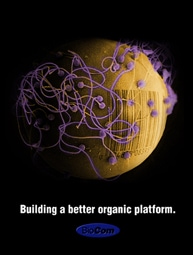Flesh Machine original website
Performed at five different venues during 1997-1998, Flesh Machine is a multimedia, interactive performance installation that frames new reproductive technologies as eugenics. CAE characterizes eugenics as “a perfect complement to the capitalist political-economic imperative of authoritarian control through increased rationalization of culture” but suggests that eugenics has been marginal since it became associated with Nazi social policy, and therefore counter to “democratic principles of choice.” (Read the full project position paper on the Flesh Machine website.)



Nearly fifteen years after Flesh Machine was first performed, we might wonder whether eugenics is “still waiting in the wings”? One point that is worth clarifying is whether eugenics really requires the “radical improvements” in medico-scientific interventions that biotech advertising, popular opinion, and even some of the CAE materials suggest is either here or right around the corner. In fact, historians and science and technology studies (STS) writers might argue that the power of eugenics derives less from the actual control of human traits that eugenic practices can offer, but the promise and illusion of control. Eugenics is built, after all, on several key misconceptions about human ontology, most importantly the idea that socially-important human “types” correspond well with biological “types” or traits. Viewing Flesh Machine with this in mind, it is interesting to notice the elements of language, technology, and rhetorical tone that CAE have so effectively lifted from corporate biomedical research in order to convey a sense of scientific mastery, predictability, and the “naturalness” of consumer choice in the realm of reproduction.
In all elements of Flesh Machine, viewer/participants encounter a critique of NRT (and modern, capitalist biomedicine in general) based on rejection of mechanization of the body, alienation of human feelings and emotions from bodily parts and functions, and a fundamentally dangerous drive to “purify” human bodies and populations. This piece compels multiple reactions and readings, which change for me every time I revisit it. For example, as much as I am awed by the intelligence and aesthetic appeal here, I see a thread of romantic heteronormativity that runs through the piece, in the repeated indictment of new reproductive technologies for “separating sexuality from reproduction.” Both feminists and queers have generally celebrated the split of these telos-twins, and I can’t share in a longing to reconnect the two. But the denunciation was still useful because it made me think, not for the first time, of the problematic way that focusing on reproductive “technologies”—even capaciously, as we do in this issue—again leaves heteronormative reproduction outside the spotlight, even as other social and material practices (e.g., adoption) come under scrutiny. This is why I think we need art to think well and act with justice in relation to reproductive technologies. Complex, powerful pieces like Flesh Machine simultaneously convey layered meanings without a need to resolve, prioritize, or logically order them. Perhaps more importantly, the emotional responses they call forth remind me of Lauren Berlant’s notion of public spheres as “affect worlds,” which suggests that we can’t simply think our way out of the dilemmas that reproductive technologies pose for us. We need to sit with the emotions that circulate in this realm, which means not mis-reading technological reproduction as “affect-free”, but parsing the specific affective attachments we have to technology, with all its beautiful, clean, and orderly aesthetics and its promise of a better future.



